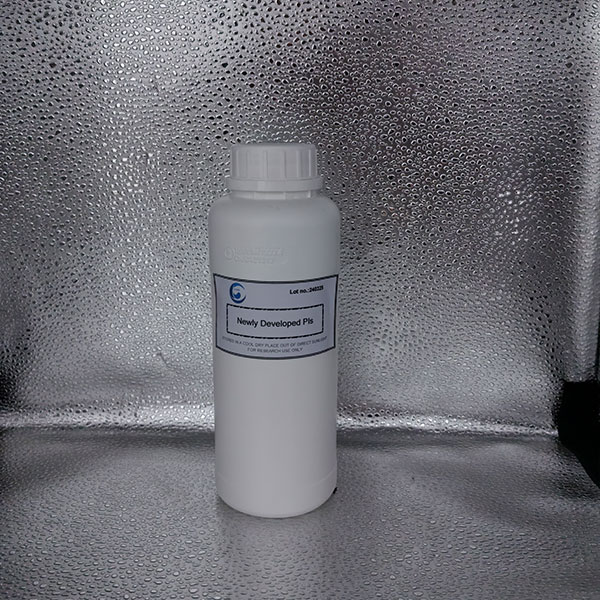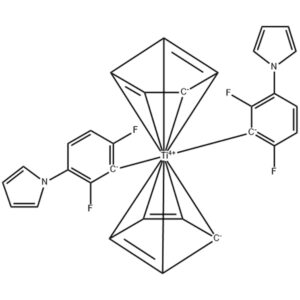Descrição
Fotoiniciador 754 / Omnirad 754 / IRGACURE 754
Nome químico: Mistura de éster de 2-[2-oxo-2-fenil-acetoxietoxi]-etil do ácido oxifenilacético e éster de 2-[2-hidroxietoxi]-etil do ácido oxifenilacético
Sinônimo: Fotoiniciador 754; Omnirad 754; IRGACURE 754
Número CAS: 211510-16-6 & 442536-99-4
Padrão:
| Item | Espécie |
| Aparência | Líquido amarelo claro |
| Ponto de fusão | < -22 °C |
| Gravidade específica (água = 1) | 1.2 |
| UV/VIS Picos de absorção (nm) em metanol | 255,325 |
| Viscosidade | 84mPa s(20℃) |
| Ensaio | ≥95.0% |
| Voláteis | <0.5 |
| Transmissão | 425nm , ≥40,0 |
| 450nm , ≥40,0 | |
| 500nm , ≥40,0 | |
| Clareza | Solução transparente, sem matéria em suspensão |
Função & Aplicativos:
O 754 é a escolha óbvia quando os odores residuais precisam ser mantidos em um mínimo absoluto, as emissões precisam ser as menores possíveis e o grau de amarelamento após a cura precisa ser estritamente limitado. Há um bom motivo para isso: do ponto de vista ambiental, baixos odores residuais e emissões estão de acordo com os conceitos modernos de proteção ambiental, especialmente em produtos relacionados a ambientes internos, como decoração de casas, que podem reduzir efetivamente a poluição do ar e proteger a saúde dos usuários. Do ponto de vista da estética e da qualidade do produto, o baixo amarelamento após a cura garante a estabilidade da aparência do produto ao longo do tempo. No caso de alguns móveis de madeira de alta qualidade, o amarelamento não só afeta a aparência, mas também pode reduzir seu valor.
Esse incrível 754 é excelente em formulações tradicionais de cura por UV e é como uma chave sob medida para a cura por UV. Vale a pena mencionar que o 754 é extremamente flexível em aplicações de formulação. Ele pode ser autônomo e funcionar como o único fotoiniciador ou pode trabalhar em sinergia com outros fotoiniciadores. Quando combinado com outros fotoiniciadores, é como formar uma superequipe que pode atender melhor a diversas necessidades, aprimorando propriedades específicas, como efeitos de cura e reatividade.
Os campos de aplicação em potencial do 754 são realmente diversos. Tome como exemplo o verniz para pisos de PVC. Os pisos de PVC são amplamente utilizados em edifícios modernos, tanto em instalações comerciais quanto em ambientes domésticos, e exigem uma camada de verniz de alta qualidade para protegê-los. O 754 é usado aqui não apenas para manter a boa aparência do piso a longo prazo, mas também para resistir ao atrito e ao pisoteio diários.
Vamos dar uma olhada no acabamento do piso de parquet. O piso de madeira sempre foi um dos favoritos para decoração de alto padrão, mas a madeira é suscetível a influências ambientais externas. Historicamente, os pisos de madeira em alguns palácios antigos se deterioraram e descoloriram com o tempo devido à falta de medidas de proteção eficazes. Hoje, com a ajuda do 754, o piso de parquet pode resistir à erosão do tempo e manter sua linda aparência.
No campo dos revestimentos plásticos, a aplicação do 754 envolve todos os aspectos de nossas vidas. Tomemos como exemplo os CDs e os telefones celulares. Os CDs precisam permanecer lisos e estáveis durante o processo de leitura, enquanto a capa do celular precisa resistir ao desgaste diário e à radiação ultravioleta. De acordo com pesquisas relevantes, os revestimentos plásticos que usam 754 melhoraram a resistência ao desgaste e à radiação ultravioleta em cerca de 30% em comparação com os revestimentos comuns, o que, sem dúvida, aumenta muito a vida útil do produto.
Para os móveis de madeira, sua importância é evidente. Desde os clássicos móveis Ming e Qing até as modernas mesas e cadeiras de madeira minimalistas, a proteção dos móveis de madeira sempre foi uma questão importante. A aplicação do 754 proporciona melhor proteção aos móveis de madeira, permitindo que eles durem mais.
Além disso, o 754 também tem excelente desempenho em termos de cura e estabilização de UV. No tratamento de algumas instalações externas ou de materiais sensíveis à luz UV, o 754 é como um guarda-chuva protetor invisível, garantindo que os materiais permaneçam estáveis e confiáveis sob exposição prolongada aos raios UV.
Os aplicativos em potencial para o 754 são:
- revestimentos transparentes para pisos de PVC,
- revestimentos superiores para parquetes de madeira,
- revestimentos plásticos em geral (discos compactos, telefones celulares, etc.),
- móveis de madeira,
- Curável por UV Estabilizado por UV
Adição recomendada níveis
A quantidade de 754, conforme fornecida, necessária para o desempenho ideal deve ser determinada em testes que abranjam uma faixa de concentração:
Espessura do filme 5 - 20 µm 2 - 4 %
Espessura do filme 20 - 200 µm 1 - 3 %
PEmbalagem e remessa:
Embalagem: 20 kg/caixa de papelão.
Entrega: em 5 a 7 dias úteis.
Armazenamento:
Armazenado em um local fresco e seco, longe da luz solar direta.
Entre em contato conosco agora!
Se precisar do Price, preencha suas informações de contato no formulário abaixo. Normalmente, entraremos em contato dentro de 24 horas. Você também pode me enviar um e-mail info@longchangchemical.com durante o horário comercial (das 8h30 às 18h UTC+8 de segunda a sábado) ou use o bate-papo ao vivo do site para obter uma resposta imediata.






Comentários
Ainda não há comentários.